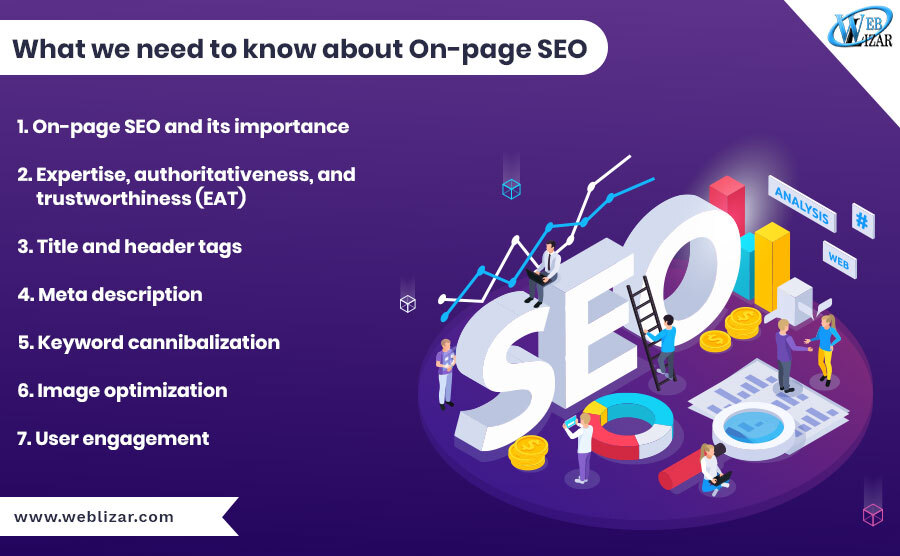To succeed in organic search, you need to discover significant on-page search engine optimization (SEO) considerations. Over the times, attention has shifted towards off-page SEO methods like link building, but this won’t yield many results if we don’t focus on on-page SEO. SEO practitioners agree that search setting is rapidly changing, and up to date knowledge on on-page SEO optimization is a priority. Therefore, this post explores the significant considerations for the on-page SEO for the search landscape.
On-page SEO and its importance
On-page SEO/on-site SEO is the exercise of boosting web pages to increase on site’s search engine standings and receive organic traffic. The practice, when implemented, improves the website’s prominence in the search outcomes.
On-page SEO supports search engines to comprehend website content, and identify if it is appropriate to a search query. As technologies evolve, search engine vendors are refocusing on semantics and relevance in the search engine outcomes pages. Google’s search engine algorithms can better understand what the user is looking for when they submit a query, and these searches more often meet the user’s intention. Being true to this reality means that a site and its contents (which is observable to both users and search engines) are optimized based on prevailing best practices. Also, on-page SEO gives us even greater leverage in optimizing on-site components that can result in higher organic traffic and an increase in web visibility.
Expertise, authoritativeness, and trustworthiness (EAT)
EAT is a framework used by Google raters to evaluate content creators, websites, and webpages holistically. Google majorly uses content as a metric in website assessment; therefore, sites generating high-quality content are ranked highly, hence providing high visibility. Consequently, in an on-page SEO strategy, EAT is a factor to be considered.
Title and header tags
A title tag is a sub-element of the head tag in the HTML tags hierarchy, and it gives the perspective of the corresponding page subject matter. Title tag contents appear on the search engine outcomes as a clickable link in the browser. Therefore, omitted, identical, and poorly constructed title tags can negatively impact the on-page SEO results. Use header tags (H1 – H6) to identify headings and subheadings within web page content. Though you will not use the header tags in website ranking, they are visually crucial to users. They make content more natural and more enjoyable to read and provide keyword-rich context about content for search engines.
Meta description
Meta description explains the contents of the page and is visible in the search engine results pages beneath the title page. Even though Google observes that meta description doesn’t aid in the ranking, there is evidence that suggests that attributes of a better story do help in on-page SEO strategy. Correct optimization of meta description can assist increase: click-through rate, opinion of the superiority of the outcome, and opinion of what the website offers.
Headlines
Headlines are entry points to articles or posts. They need to trigger interests to be noticeable and attract users to browse and continue reading the content while yawning for more. Therefore, headlines for such articles or posts need to be well thought and crafted to generate lots of interests for users.
SEO writings
SEO writings are the art of generating content while considering both people and search engines. Whereas SEO content is more of keyword research, writing content for human beings is more of high-quality material, relevant, and substantial. Struggling with content? We provide not only academic, but also business creative writing services.
Keyword cannibalization
Keyword cannibalization is the effect of targeting specific terms across multiple pages in a web site. The additional pages we have targeting a keyword, then the better we are ranking for the same keyword. With more web pages ranking for a similar keyword, you are challenging yourself, and this is a disastrous consequence for your SEO. It is essential to be able to identify the presence of keyword cannibalization in a site and resolve it.
Content audit
Content creators put a lot of emphasis on generating new content before auditing the existing content. Auditing existing content is essential since it assists you to know if you are achieving goals, identify if the information in the material is precise or outdate, and determine the kinds of content that work for you. The regular content audit has the potential to assist your SEO strategy.
Image optimization
An adage states that an image speaks a thousand words. Having pictures on a web page makes the page more attractive, but too much can have adverse effects on the web page. Some images can slow down the website performance a great deal, so you must think of the image you are going to use. Image optimization in terms of image size, image quality, image relevance, descriptive image titles, and image alternate text can yield high dividends to content creators. Well, optimized images have the following benefits: improved user involvement, faster page loading, and added ranking opportunities.
User engagement
On-page SEO components is not an end on itself, but having and retaining an army of enthusiast users is a good SEO strategy. Users ought to be captivate to continue clicking through the site and come back later for more content. To improve user interaction, you will need to put more effort into aspects like user experience, web site speed, content optimization, user interface.In conclusion, the above tips give you the ability to modify your site and give it a high ranking.

